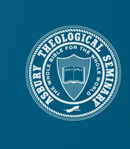Abstract
Christians today sometimes debate the propriety of contemporary worship styles. Examining features of Exodus's tabernacle in light of cultures surrounding ancient Israel offers one biblical model for contextual worship. These features reveal that this model was relevant to its cultural setting Some contextual elements fit Israel's setting merely out of necessity or expediency. Other elements employ existing forms, sometimes even from non-Israelite religious practices, to communicate a point intelligible within that cultural sphere. Still other elements show striking contrasts with surrounding cultures, contrasts highlighted all the more conspicuously by the aforementioned similarities. Noticing which elements are similar and which elements differ is also important the contrasts appear especially at the level of fundamental conceptions about God.
These observations suggest that many aspects of a Eiven culture's forms may be adapted in worship. What must be maintained, however, is the holiness of the true God and the ways that God invites worship. Thus, for example, music styles are culturally shaped rather than universal; no one style should be imposed on all worshipers. At the same time, worship practices should never lose sigpt of what worship should be about honoring the one true God in the Spirit and in truth.
DOI
10.7252/Journal.01.2012S.07
Recommended Citation
Keener, Craig
(2012)
"The Tabernacle and Contextual Worship,"
The Asbury Journal:
Vol. 67:
No.
1, p. 127-138.
Available at:
https://place.asburyseminary.edu/asburyjournal/vol67/iss1/8
Included in
Missions and World Christianity Commons, Other Religion Commons, Religious Thought, Theology and Philosophy of Religion Commons

